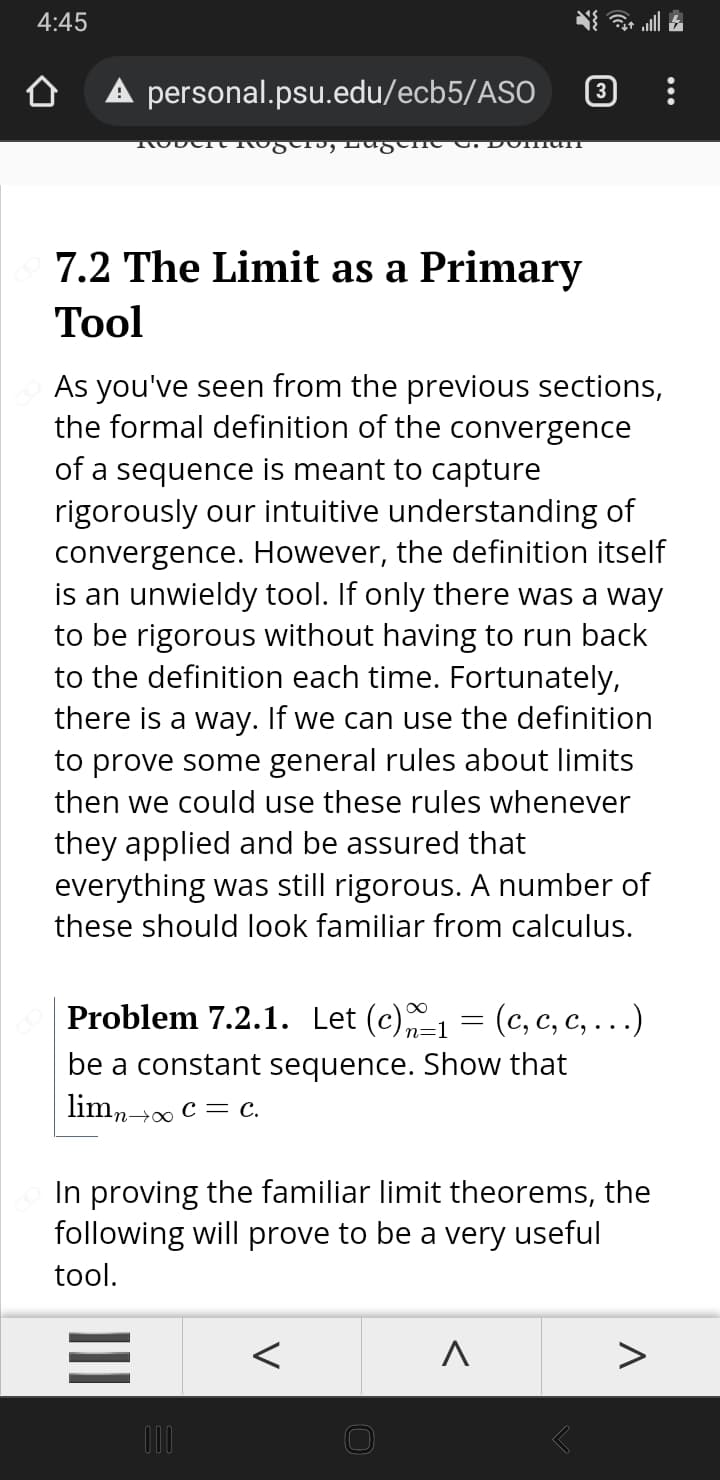there is a way. If we can use the definition to prove some general rules about limits then we could use these rules whenever they applied and be assured that everything was still rigorous. A number of these should look familiar from calculus. Droblenm 72 1 Let (e)0
there is a way. If we can use the definition to prove some general rules about limits then we could use these rules whenever they applied and be assured that everything was still rigorous. A number of these should look familiar from calculus. Droblenm 72 1 Let (e)0
Chapter9: Sequences, Probability And Counting Theory
Section9.1: Sequences And Their Notations
Problem 65SE: Follow these steps to evaluate a finite sequence defined by an explicit formula. Using a Tl-84, do...
Related questions
Question
Analytical math
Please help me solve problem 7.2.1

Transcribed Image Text:4:45
A personal.psu.edu/ecb5/ASO
7.2 The Limit as a Primary
Тool
As you've seen from the previous sections,
the formal definition of the convergence
of a sequence is meant to capture
rigorously our intuitive understanding of
convergence. However, the definition itself
is an unwieldy tool. If only there was a way
to be rigorous without having to run back
to the definition each time. Fortunately,
there is a way. If we can use the definition
to prove some general rules about limits
then we could use these rules whenever
they applied and be assured that
everything was still rigorous. A number of
these should look familiar from calculus.
Problem 7.2.1. Let (c)1 = (c, c, c, ...)
%3D
n=1
be a constant sequence. Show that
limn> c = c.
In proving the familiar limit theorems, the
following will prove to be a very useful
tool.
V
II
Expert Solution
This question has been solved!
Explore an expertly crafted, step-by-step solution for a thorough understanding of key concepts.
This is a popular solution!
Trending now
This is a popular solution!
Step by step
Solved in 2 steps with 2 images

Recommended textbooks for you

